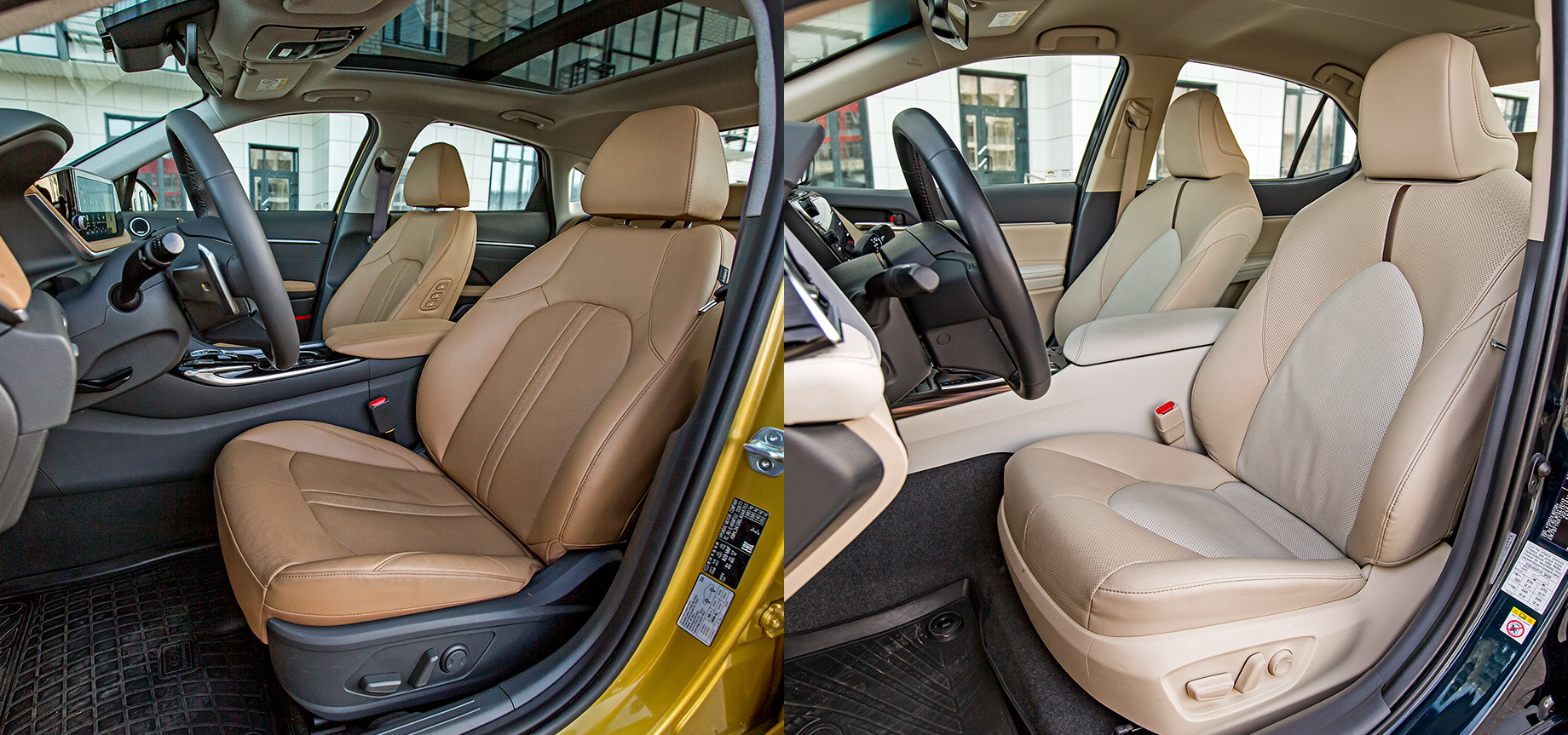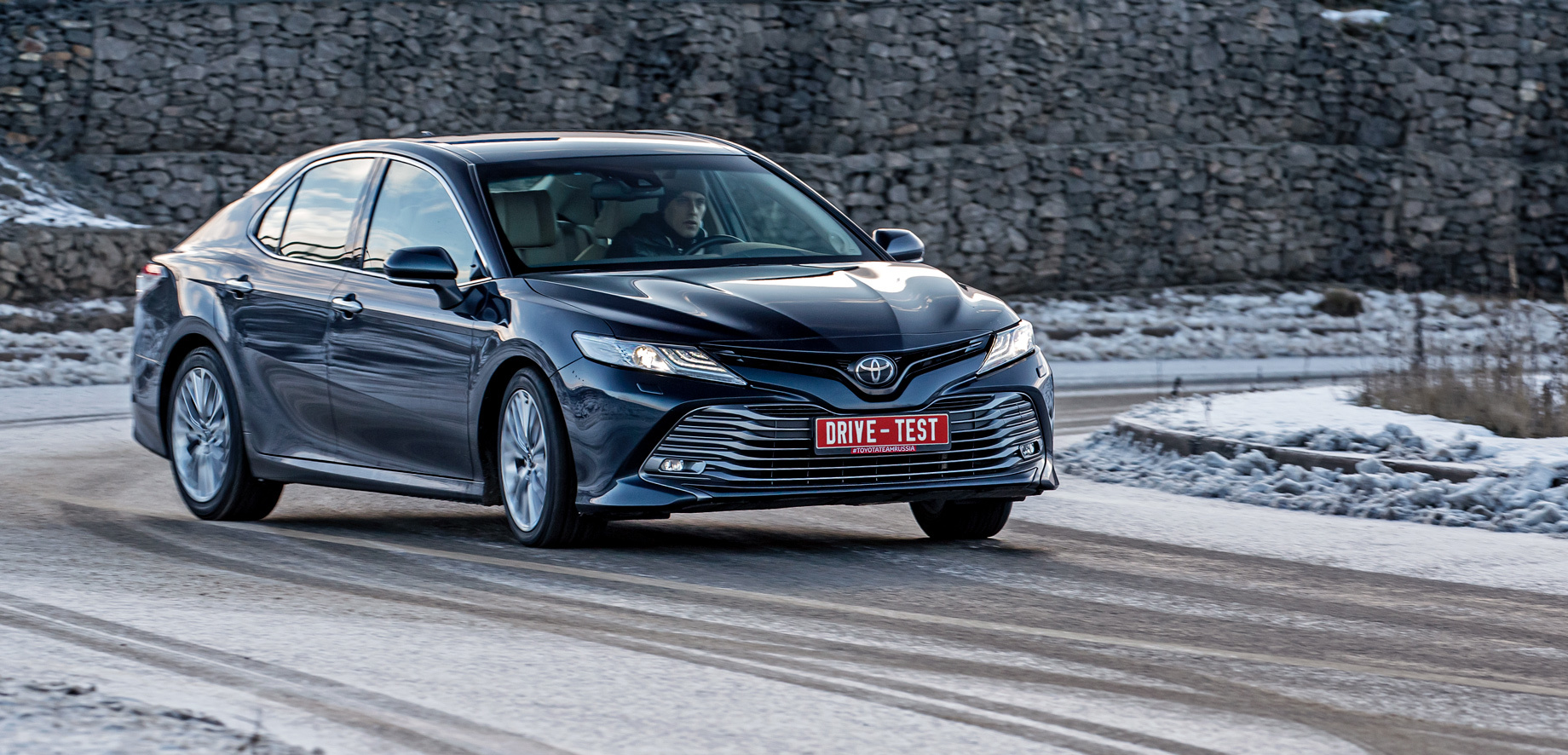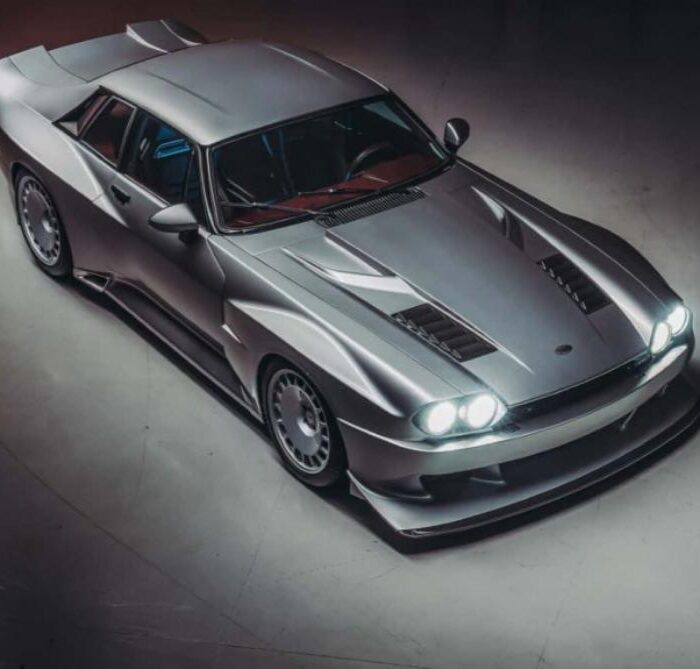The most demanded Sonata after the change of generations remains a two-liter 150-horsepower. But the top-end Sonata 2.5 Prestige (180 hp, 232 N•m) presented here turned out to be the second most popular in the entire range by the beginning of spring. Only such cars are provided by the Hyundai press park, which leaves us no freedom when choosing Toyota — we are again working with the well-known Camry 2.5 (181 hp, 231 N•m). To make the comparison correctly, we take two identical Toyotas, remove the Yokohama Ice Guard IG60 235/45 R18 non-studded tires from one and rearrange them to the Sonata.

However, in pursuit of the actual test, we agree to a compromise in trim levels. The test Toyota, equipped no worse than the Sonata, is the Safety Suite with an advanced rear seat. And ideally, you need to take the Safety Prestige, which is a little more expensive than our Sonata. Such a Camry is poorer than its rival: no front seat ventilation, no driver’s memory settings, no blind spot monitoring system. Besides, the steering column is mechanically adjustable, like it’s in the Korean car.
However, each of the test participants has unbreakable trump cards. Standard for the top-end Sonata all-round visibility system, projector readings on the windshield and optional panoramic roof are not available for Camry with a 2.5 engine. But Toyota can offer rear passengers power backrests, side airbags and a separate climate zone with a universal control panel in the armrest. Although, all this is at the cost of transforming the sofa.
The main difference between our heroes, in my opinion, is ideological. Sonata is mostly addressed to the private owner. Her external — no, not beauty — courage is not designed for the passenger, not for the one who comes from the rear right door. Gradient marker lights and black lacquered sills should appeal to the individualist buyer.
But I’m not very clear on the economics of the other side of this business. Maybe someone will tell you why is it worth taking the Sonata for the sake of renting it out? For a professional driver, the warranty is limited to 62.137 miles. Some Sonata nodes have an even lower limit — 12.427. What’s more, Hyundai work in a taxi falls under the definition of “heavy duty” and requires an oil change every 4.660 miles. Camry is allowed to service every 6.213.

A hundred times it has been said about the interior of Toyota, but personally I have not yet come across a light finish option. For some reason, the Japanese chose two shades of beige leather, and the darker one seems just dirty. There are too many different textures, and the buttons in different parts of the cabin are pressed with different efforts, causing the feeling of a hodgepodge. In the Sonata, the materials are carefully selected, and all the keys work with the same soft click.
But speaking about the perceived quality, I can’t help but blame the Korean interior designers for the unsuccessful selection of leather on the steering wheel. It is sticky like rubber. Of course, someone likes smooth dressing more than porous. And, for example, in the version of Audi or Mazda, such a solution is convincing, because there the texture of the finish is in harmony with the elasticity of the lining. And the rim of the Sonata lacks suppleness, it is tightly pulled into a sparingly cut patch and, most likely, will soon begin to gloss.
The effort created by the Sonata electric amplifier is also unnatural. It is small, barely changes when the steering wheel is deflected, and is rather a sluggish imitation of a reactive action. The steering wheel makes about 2.7 turns between the extreme positions — only a little more than in the Camry. But subjectively, the Sonata steering wheel seems “longer”, and its responses to control actions are much calmer. On the arc, Hyundai stands exactly, almost not reacting to changes in the fuel supply.
And Camry is characterized by kinematic steering of the rear axle, and sensitivity to the redistribution of mass. In extreme modes, Toyota allows you to adjust the trajectory with both the steering wheel and the gas. It more readily follows the steering wheel, and on the arc it gives the impression of a more lively, driver’s car, although it is very rolled. The Sonata rolls less, less nose dives when decelerating, and doesn’t rear up when accelerating. Partly owing to this, it almost does not slip, starting abruptly, and picking up 60 miles/h a little earlier than the Camry.

The rich equipment almost equalized the curb weight, and Hyundai is perceived more dynamically, firstly, because of the more sensitive accelerator, and secondly, because of the loud sound of the engine. There is too much of it in the cabin for a car of this class. Even rear passengers have to put up with a vigorous exhaust hiss at full throttle. The rumble of tires and external sounds are more noticeable in the Sonata — in the entire speed range it is noticeably noisier than the Camry, where the road begins to bother only after 50 miles/h.
The Sonata is stiffer on all types of bumps. It rounds the bumps as much as possible, but there are still a lot of vibrations on the floor and tight seats. It trembles on a short wave, detailizes the transverse joints. It also strongly kicks on the speed bumps already at 12.5 miles/h, thumping the suspension on the rebound. And it doesn’t get softer with speed, unlike the generally smoother and more forgiving Toyota. A specific drawback of Camry — body motion — will be noted by passengers prone to seasickness.
Obviously not claiming to be a bestseller, the Sonata is very different from the Camry both in detail and conceptually. Including the model of relations with the private consumer. Look what Toyota is doing: not being a beauty, it is able to win favor with ride quality and comfort. And we went through this in the editorial office. Hyundai, by contrast, promises more than it can deliver.
The Sonata behavior lacks a zest, the presence of which is hinted at by the bold design and decent interior. Buying an expensive version of 2.5 for personal use is not an easy decision. In exchange for good equipment, the customer is doomed to deal with a noisy body and a chassis devoid of a particular mood. It provides neither comfort nor interesting handling. The lack of character makes the already complex positioning of the Sonata completely incoherent.

And again, it seems to me that the lack of a strong core idea is not a problem of a single car, but of the brand as a whole. Hyundai can not find its place in any way now between two related brands. Even Genesis got back on its feet, not to mention KIA, and now they are like goalposts, where Hyundai should constantly score, but it hits every other time. Only the same whole model can throw a real challenge to the Camry, but the creators of the Sonata seem to lack understanding of this specific segment.
This is a translation. You can read the original here: https://www.drive.ru/test-drive/toyota/hyundai/5e5a606eec05c4ef6c00000f.html

Опубликовано Январь 05, 2023 • 6м на чтение






